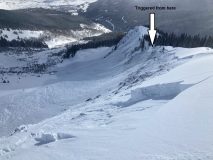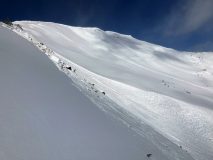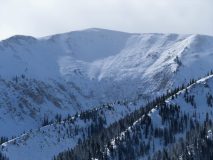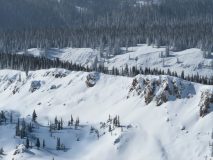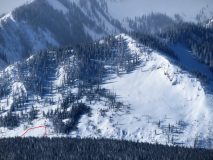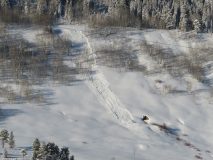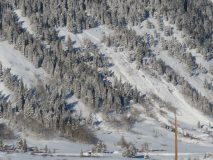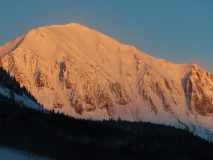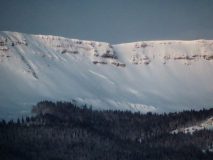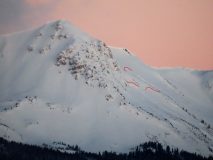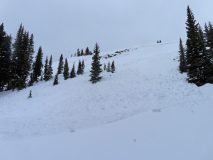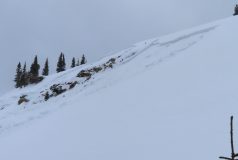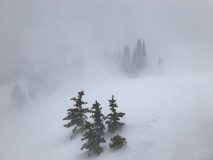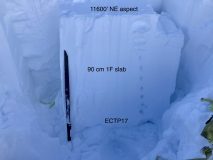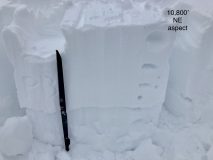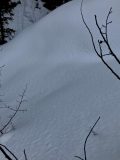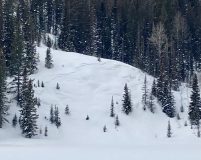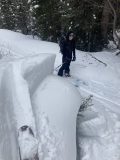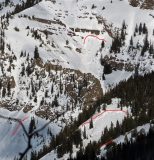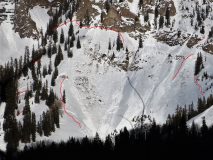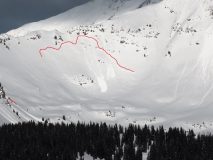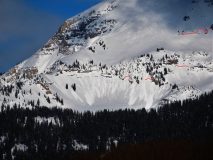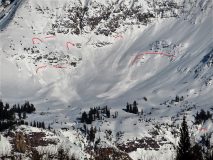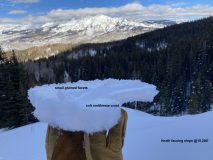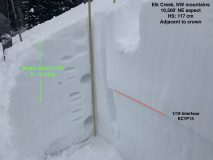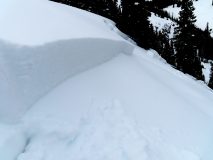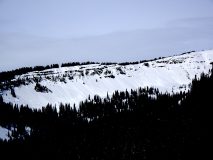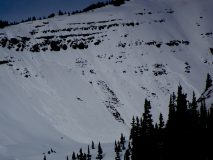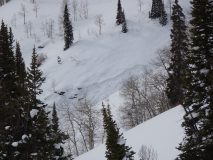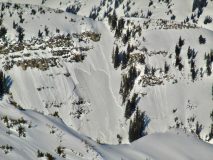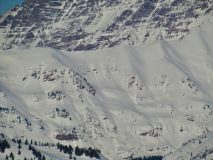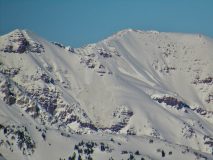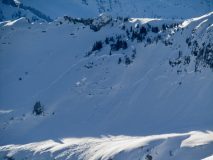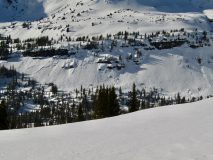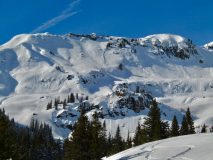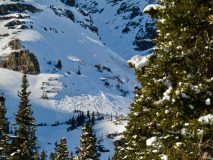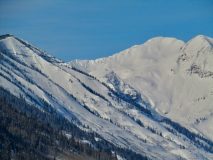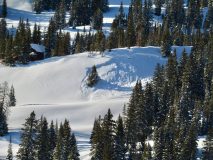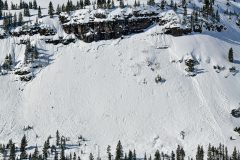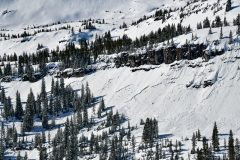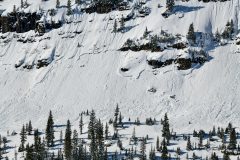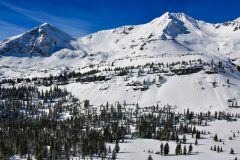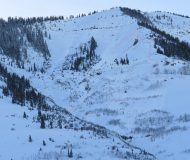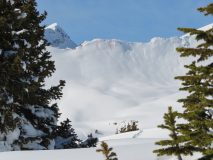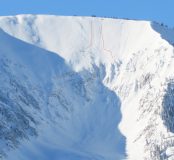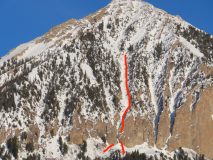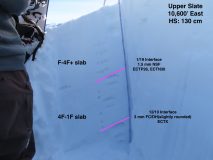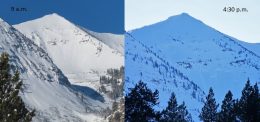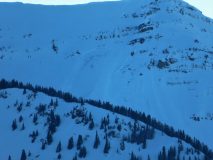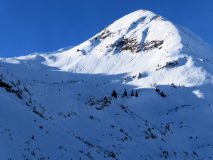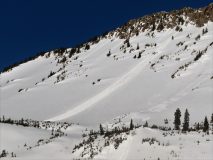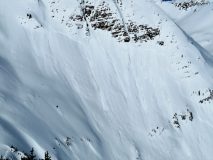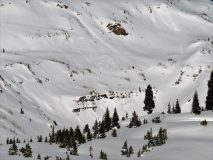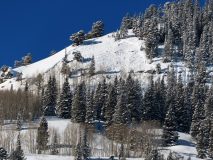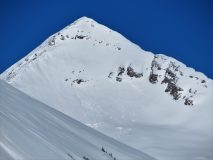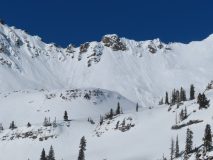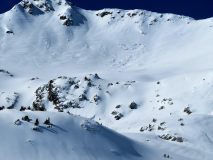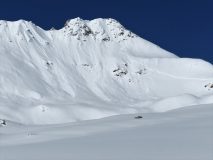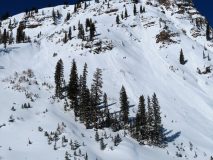Remote triggered slide in Red Lady Bowl, and more natural avalanches
Date of Observation: 02/04/2021
Name: Zach Guy
Zone: Southeast Mountains, views of Northwest Mountains as well
Location: Red Lady
Aspect: North East
Elevation: NTL
Avalanches: Less natural activity than I expected to see after last night’s intense precip. Good views of Axtell, Emmons, parts of Schuylkill, and parts of the Ruby Range this morning. Photos below show the largest activity that I could see. The most notable was a very wide avalanche in Elk Creek, which spanned multiple start zones.
While heading to ski Red Lady Glades, we remotely triggered a large persistent slab in Red Lady Bowl. We watched a group of 5 skiers descend the bowl around 10 a.m. Once they were clear of the runout, I ventured off the skin track, stomped along the ridgeline twice with skis on, then took off a ski and sunk my boot down to the weak layer and got the collapse. The slide propagated about 1800 feet along the E/NE side of the bowl, 3 to 4 feet thick on average. It failed on the 1/19 interface and gouged to the ground. The 1/19 layer is close to the ground here due to strong wind erosion on this slope during the mid-January wind event. (SS-AFr-R2-D2.5-O) The slide sympathetically triggered a smaller avalanche on a rollover in the bowl (D1).
Weather: Cold and clear this morning. Some light snow transport on the highest peaks. Clouds increased mid-day.
Snowpack: 8″ to 10″ of new, relatively dense snow. The dense powder is riding great on slopes less than 30 degrees.
Photos:
- Remotely triggered D2.5, Red Lady Bowl
- Looking up the ridge to where the crown was deepest, about 4 feet thick
- D2.5 NE ATL Whetstone
- R4D2.5 E BTL, Elk Creek
- D1.5 E BTL Anthracites
- D1.5 NE BTL, Peanut Lake Road
- D2 NE BTL, Peanut Lake Road
- D2 East/SE ATL on Gothic
- D2 NE Scarp Ridge
- 2xD2 SE ATL Bellview





